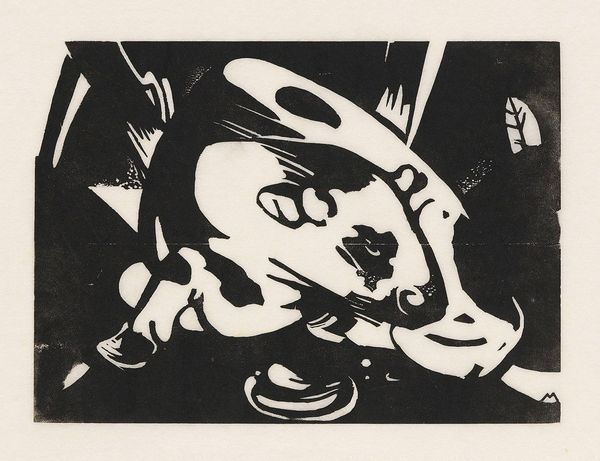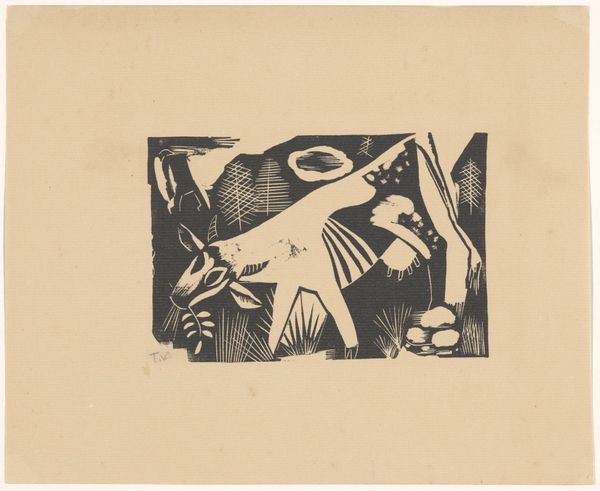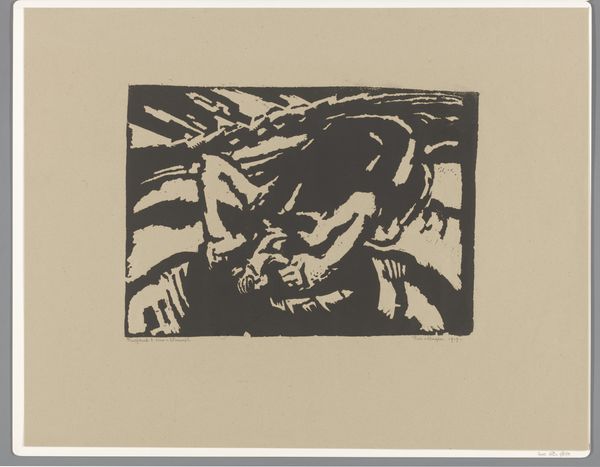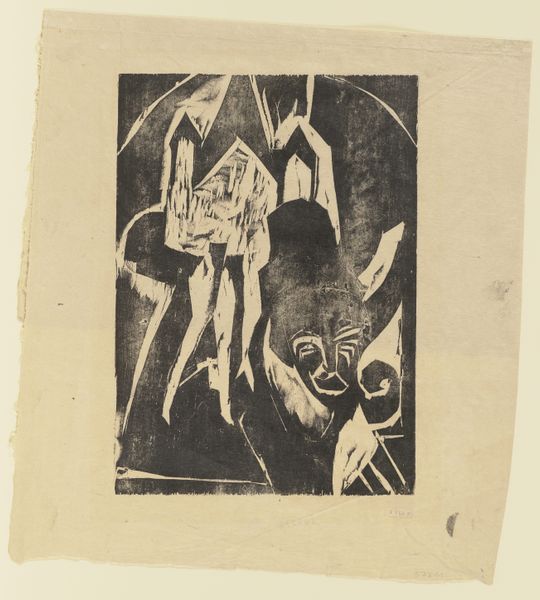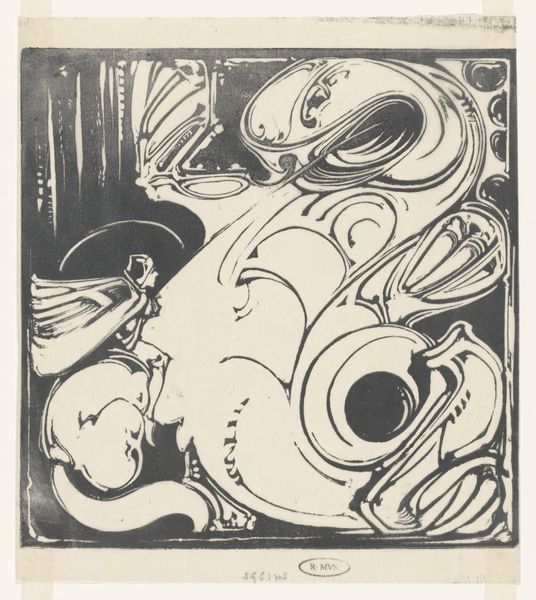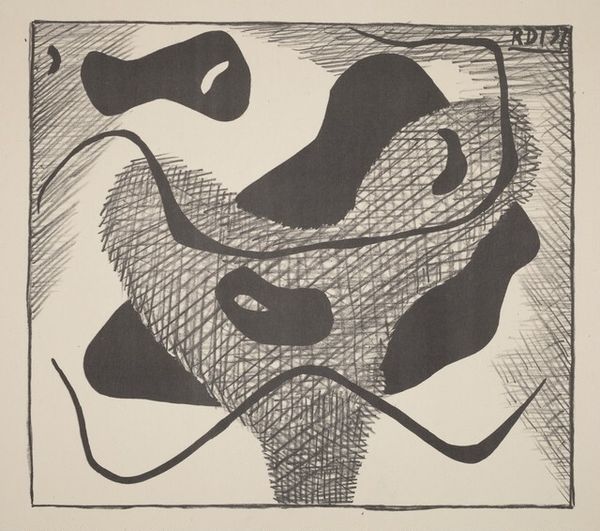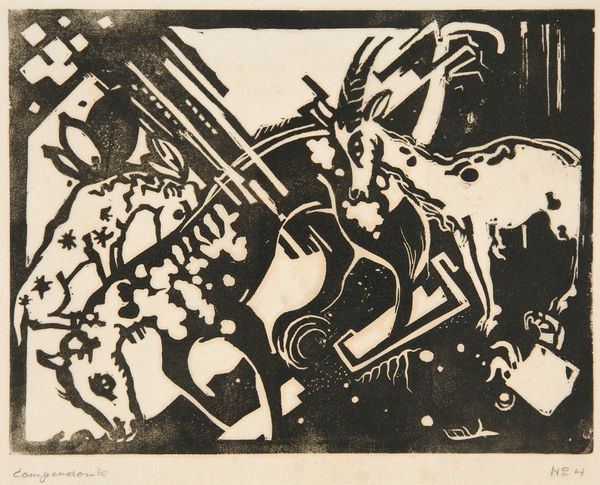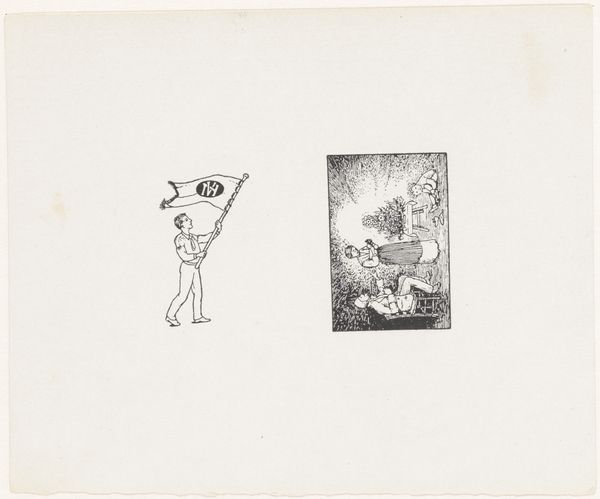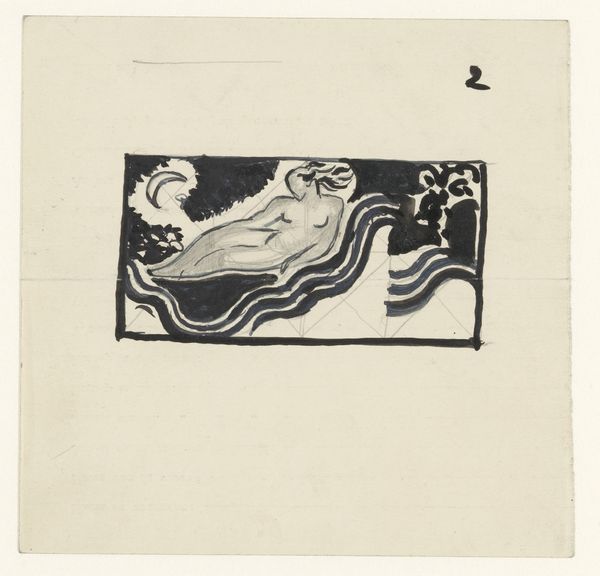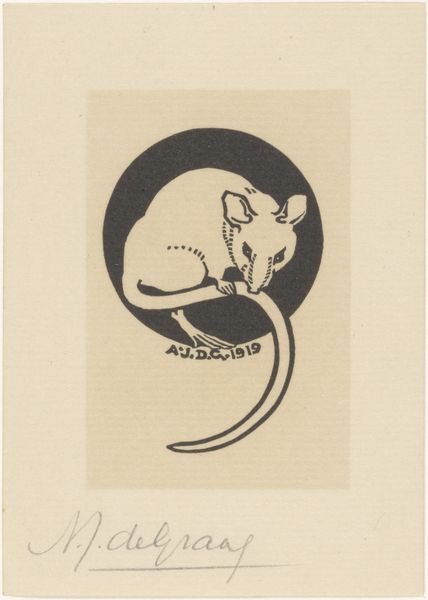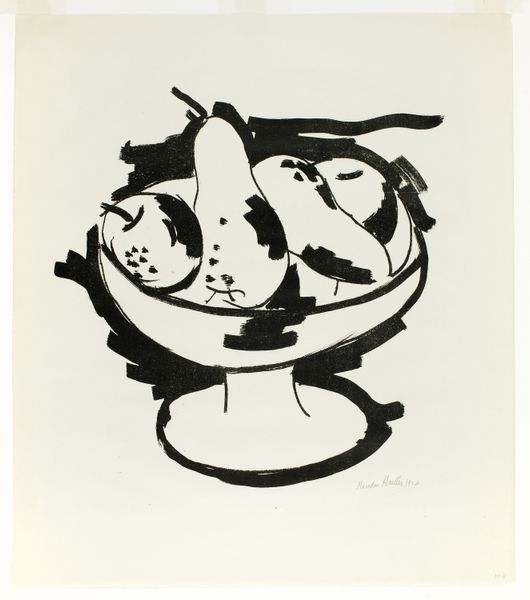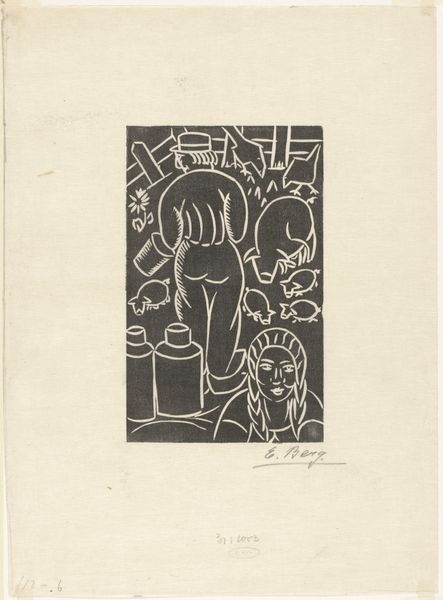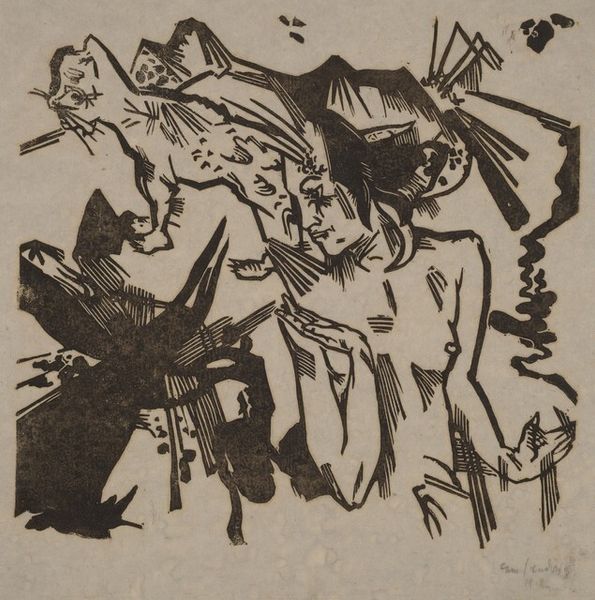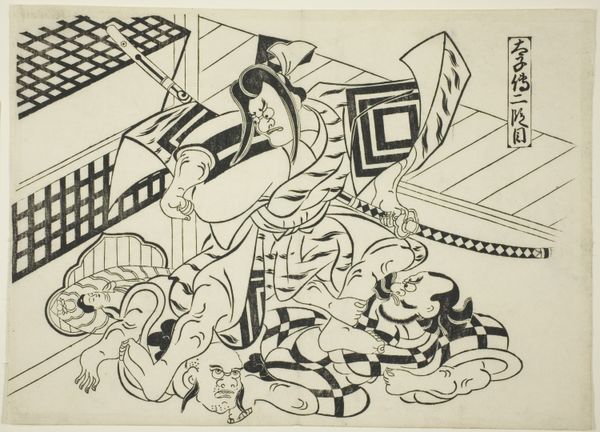
drawing, woodcut
#
drawing
#
caricature
#
german-expressionism
#
figuration
#
abstract
#
form
#
woodcut
#
line
Copyright: Public Domain: Artvee
Curator: This striking black and white woodcut is entitled "Bull," crafted by Franz Marc in 1912, at the height of the German Expressionist movement. What are your immediate impressions? Editor: The intense contrast jumps out. Stark shapes define the figure. There’s a raw, almost violent energy to the simplified forms. It really maximizes the qualities of the medium. Curator: Absolutely. Consider Marc's wider artistic project during this time. He was deeply interested in depicting animals as symbols of purity and spirituality, in contrast to what he perceived as the corruption of human society. He felt he was stripping back art to what mattered, through feeling. Editor: That emphasis on essence is fascinating. He’s reduced the bull to a network of essential forms, all angular lines and sweeping curves. It creates this tension. I suppose you could also speak to its function; I note that, printed in reverse like this, this piece served as an expressionistic interpretation printed within the Der Blaue Reiter almanac to accompany an exhibition. Curator: That's an excellent point, as the almanac and associated shows acted as direct provocations towards conservative art establishment and wider socio-political values of Imperial Germany. "Bull" becomes a critical response against oppressive, conventionalized ways of seeing the world, aligning itself with a broader critique of power. Editor: The dominance of black, the forceful carving... they really amplify the animal’s primal nature. The negative space works so well to create a sort of contained aggression. Curator: Right. The lack of color focuses our attention on the lines themselves, almost like a map. Marc creates a new visual language that redefines the relationship between humans and animals. Editor: And thinking about his broader symbolic goals—the Expressionist quest for primal authenticity—I am reminded that even form holds symbolism in place within historical narratives. What do you take away, then? Curator: I find the artwork serves as an invitation to confront prevailing orthodoxies and engage in creating progressive ways of viewing the self. Editor: A compelling testament to form carrying as much cultural narrative as figure. The formal reading has unveiled how art speaks in many ways, as this bull, reduced, abstracted, has a striking lasting visual power.
Comments
No comments
Be the first to comment and join the conversation on the ultimate creative platform.
